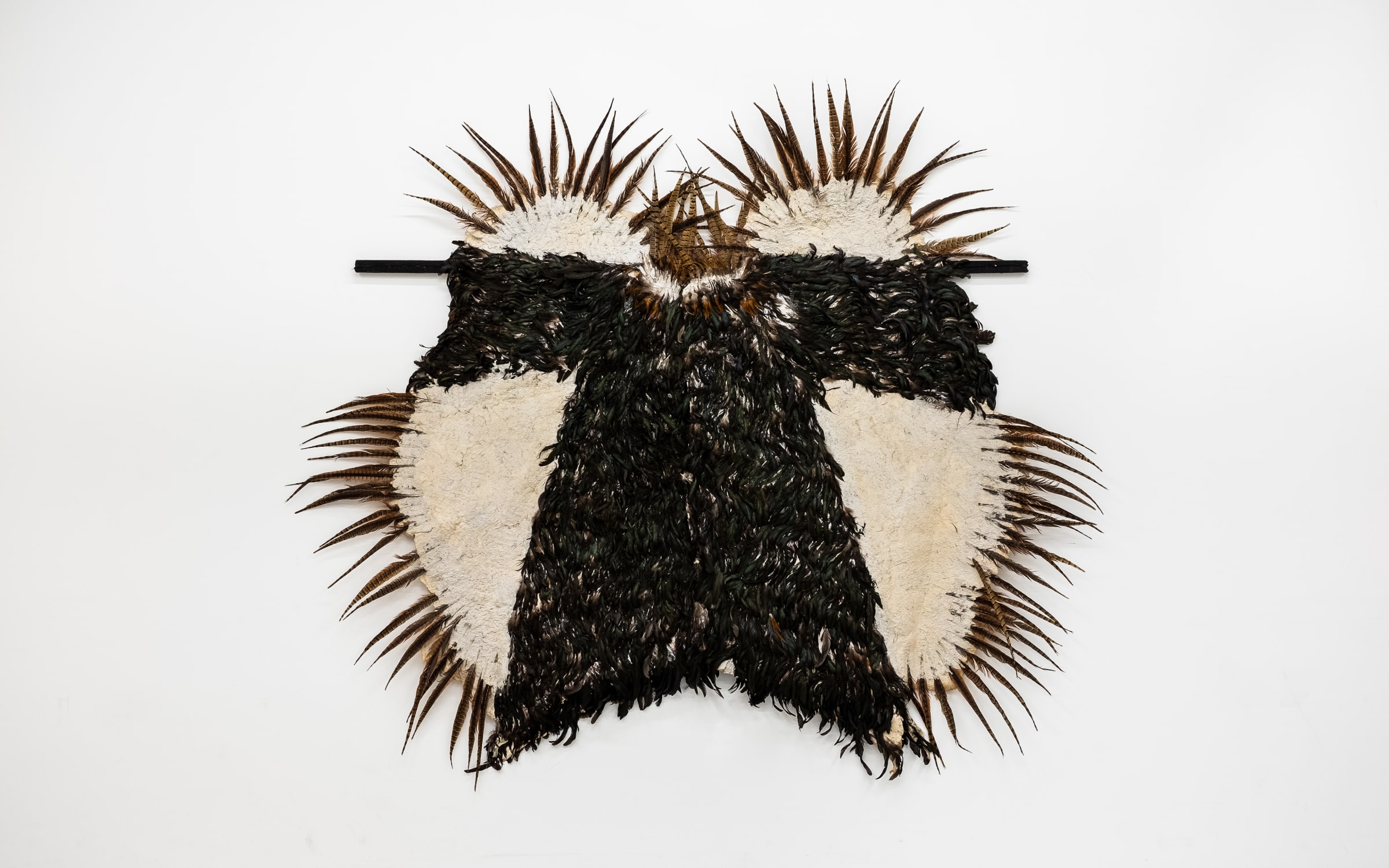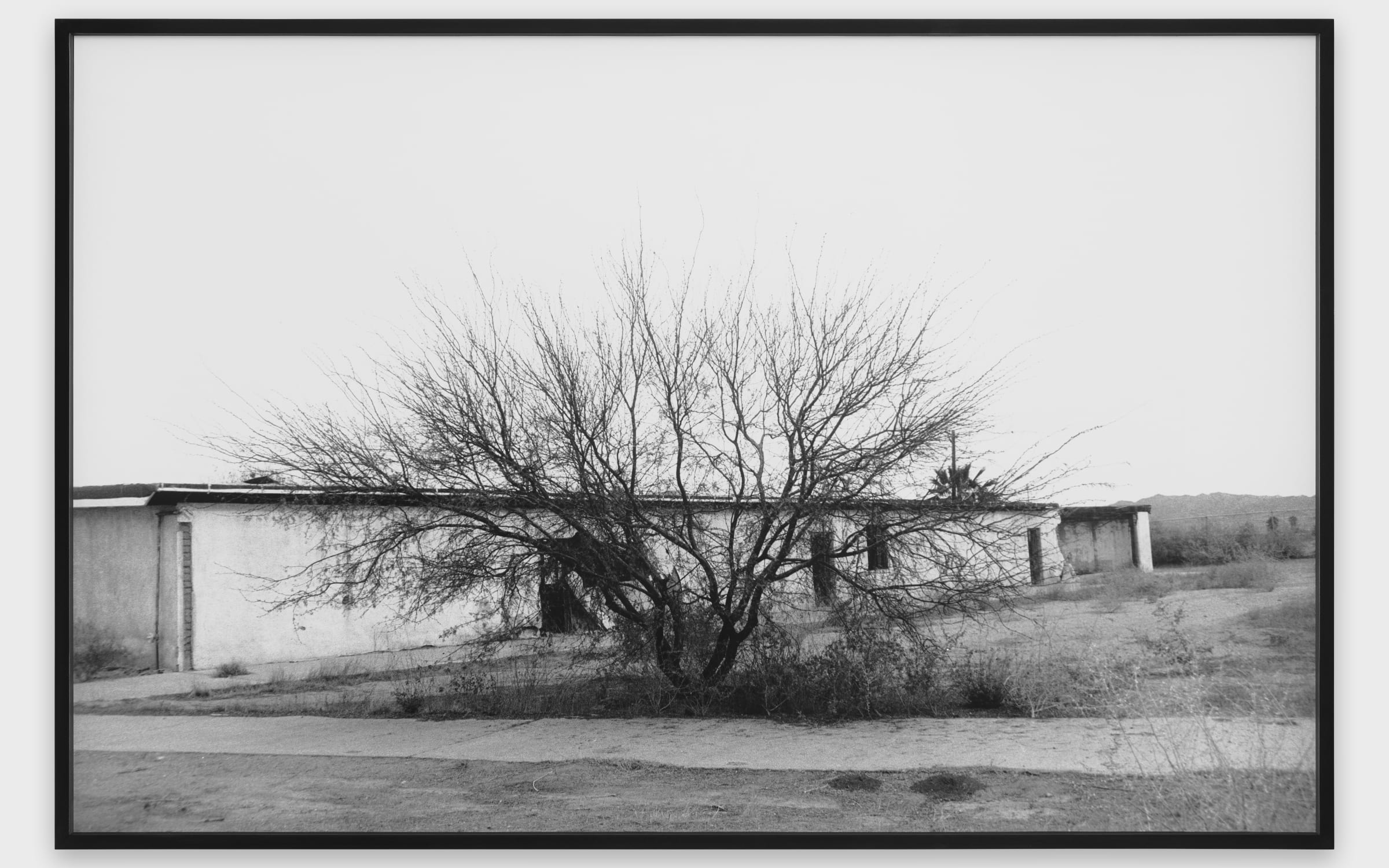Born in San Francisco to Filipino immigrant parents in 1936, the late artist Carlos Villa was told early in his career that there was no such thing as a Filipino art history. So, throughout the many decades of his practice, he sought to create one as well as locate his own place in the world.
Villa is one of countless Asian diasporic artists being presented at Art Basel Hong Kong this year whose work engages themes of identity and representation. His own aspirations toward a Filipino art history coincide with early visions of a collective Asian American identity, both of which originated in California’s Bay Area counterculture of the late 1960s. In 1968, inspired by the Black Power movement, activists Yuji Ichioka and Emma Gee, both graduate students at University of California, Berkeley, coined the term ‘Asian American’, envisioning a pan-Asian solidarity against imperialism, racism, and war. At roughly the same time, Villa (whose work will be presented in Hong Kong by Silverlens) shed his previous affiliations with Minimalism and began airbrushing capes with cyclonic whirls and adorning them with feathers. These were the vestments of imagined rituals, combining Māori tattoo patterns, Hawaiian ceremonial regalia, and other traditions of Oceanic peoples. This appropriative element of Villa’s practice reflected the multivalent influences that shaped the Philippines through its histories of colonization, migration, and trade. It also nods to the spiritual aspirations of the beatnik movement, which looked eastward for bodies of knowledge older than the United States itself.
Primarily referring to the ethnicities of East and Southeast Asia, ‘Asian American’ exists as an imperfect term; it excludes large swathes of the continent while simultaneously flattening different cultures into a monolith. Yet it also provides the sense of shared identity that Villa had been seeking, succinctly contextualizing personal experiences within larger, collective histories. For many diasporic artists, ‘Asian American’ is a way of defining a sense of self; it is a concept to examine, to work both with and against.

Artist Jen Liu’s parents left Taiwan and immigrated to Long Island, New York in the 1970s, just before she was born. Both were trained as engineers, and her father played a key role in the use of semiconductors in factories throughout Asia. Across different media, Liu now channels this personal history into high-tech, fantastical works (presented in Hong Kong by Blindspot Gallery) that confront issues of labor rights and national identity. In her paintings, industrial elements – factory smokestacks, laboratory beakers, electrical coils, and more – are set adrift in floating, surrealist compositions. In works like Pink Slime Caesar Shift, an ongoing project launched in 2016, performance functions alongside animation, feminine aesthetics, and wildly imaginative lab experiments. To critique Chinese censorship of protesting female laborers on social media, the artist encrypted activist texts into synthetic strands of DNA and injected them into beef cells, effectively proposing an alternative channel of communication.
‘To basically be allowed to do whatever I want to do, and not be worried about getting in trouble, is a privilege I don’t take lightly,’ Liu says, reflecting on the sense of social responsibility she attaches to her American citizenship. In her specific focus on women’s labor rights, ‘It’s really important to me as an Asian American to put the faces of Asian femmes in my work,’ she says. ‘Their lack of representation is real.’
Liu describes her connection to Asia as very much intact; she speaks to her extended family in China and Taiwan all the time. Across the Asian American diaspora, however, these types of connections can vary widely. Painter Greg Ito’s family emigrated from Japan to Los Angeles four generations ago – enough time for those connections to naturally fray. In the process of assimilation, his family stopped speaking Japanese two generations ago, and although the artist (whose work will be presented by Anat Ebgi) fondly recalls growing up in the Japanese American community centers of West Los Angeles, he and his now-adult peers have been admittedly less proactive about organizing community events. According to Ito, ‘The weight of preserving community and having to carry those traditions is very labor intensive.’ Still, the painter’s connection to his Japanese heritage lives on in other ways.
During the Second World War, following the bombing of Pearl Harbor, thousands of Japanese residents of California were forcibly relocated to internment camps throughout the desert. While incarcerated, Ito’s grandfather wooed his future wife by hand-carving wooden figurines of Bambi, a recurring motif in the painter’s work. In Ito’s depictions of domestic interiors – best known for their acid-bright blocks of color and immaculately rendered edges – the cartoon deer appears alongside other family heirlooms: the five-petal flower of his family crest, wooden kokeshi dolls, small but ancient bonsai trees. Passed down through generations, these are the objects that line the real-life shelves of Ito’s studio, while the paintings themselves share some of the burden of preserving family history; the more widely they are seen, the longer their stories will be told.
The origins of many of Ito’s heirlooms, including a black-and-white photo of unidentified family members, remain a mystery, lost to time and his grandparents’ reticence to recount the past. Fellow Los Angeles-based artist Kelly Akashi (presented by Tanya Bonakdar Gallery at the fair) attributes such stoicism to the Japanese Zen Buddhist term gaman. ‘It means to endure the seemingly impossible with dignity,’ she says, relating the concept to her own family history. Her father, Ronald Hidetoshi Akashi, a second-generation Japanese American, was forcibly relocated as a child with his family from their home in LA to an internment camp in Poston, Arizona. Ronald passed away when Kelly was 21 years old, having never spoken much about that ordeal.

In the early days of the COVID-19 pandemic, Akashi began traveling to Poston, where she found desolate barracks slowly eroding in the desert wind. The trees planted by Japanese prisoners were still standing, and she immortalized them in silver gelatin photographs and bronze casts of their branches. Titled ‘Witness’, this body of work is now on view at the Museum of Contemporary Art San Diego. The cast branches rest on large rectangular platforms of rammed earth, whose striated layers of sediment represent the accumulation of time.
To be a part of a diaspora is to exist with some degree of uncertainty – of identity, of belonging, or of one’s ownership of an estranged history. For each of these artists, their respective practices have provided windows of discovery, illuminating new details about themselves or a forgotten culture. For Akashi, learning the Japanese phrase mono no aware clarified certain mysteries in her life. Meaning ‘an awareness or pathos of things’, it succinctly described parts of her practice she had always struggled to explain. Opening the possibility of having inherited this worldview, it illuminated a connection she previously had not known existed.
Carlos Villa is represented by Silverlens (Manila, New York).
Jen Liu is represented by Upstream Gallery (Amsterdam).
Greg Ito is represented by Anat Ebgi (Los Angeles).
Kelly Akashi is represented by Tanya Bonakdar Gallery (New York, Los Angeles).
Art Basel Hong Kong runs from March 28 to March 30, 2024.
Janelle Zara is a freelance writer specializing in art and architecture. She is the author of Masters at Work: Becoming an Architect (2019). She lives in Los Angeles.
Published on January 24, 2024.
Captions for full-bleed image (from top to bottom): 1. Jen Liu, The Land at the Bottom of the Sea (film still), 2023. Courtesy of artist and Blindspot Gallery. 2. Installation view of Jen Liu’s Pink Slime Caesar Shift: Electropore in “Play and Loop V”, 2023. Courtesy of artist and Blindspot Gallery. 3. Installation views from Greg Ito's "All You Can Carry", 2022, Institute of Contemporary Art, San Diego. Courtesy of the artist and Anat Ebg.